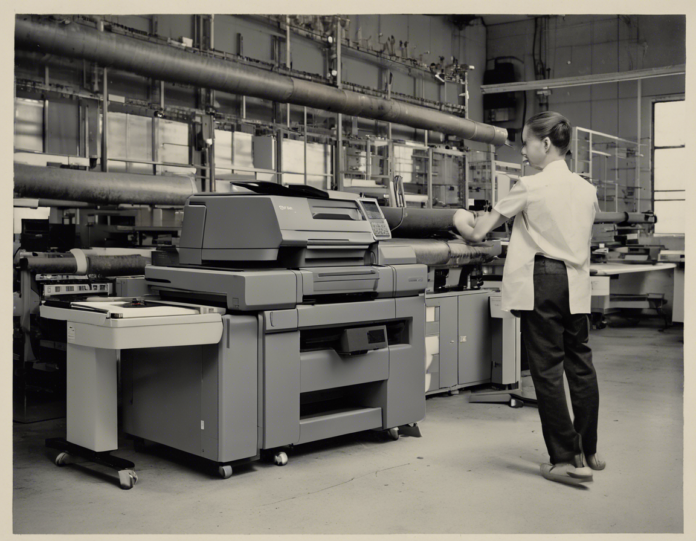In the printing industry, measuring printer output quality is essential to ensure that the final printed product meets the desired standards and specifications. Print quality can be subjective, as it may vary depending on the type of printer, paper, ink, and the complexity of the design. However, there are several objective metrics and methods that can be used to assess and measure printer output quality effectively.
Understanding Printer Output Quality
Printer output quality refers to the visual appearance and accuracy of the printed material produced by a printer. Factors that contribute to output quality include resolution, color accuracy, sharpness, color consistency, color vibrancy, and overall print fidelity. Achieving high output quality is crucial for various industries such as graphic design, advertising, packaging, and publishing, where the visual impact of printed materials is paramount.
Key Metrics for Measuring Printer Output Quality
-
Resolution: One of the most critical factors in determining print quality is the resolution of the printer. Resolution is typically measured in dots per inch (DPI), and a higher DPI results in sharper and more detailed prints.
-
Color Accuracy: Color accuracy is essential for maintaining brand consistency and ensuring that the printed colors match the original design. Color management tools and color profiles can help achieve accurate color reproduction.
-
Sharpness and Detail: The sharpness and level of detail in printed images are key indicators of print quality. The printer’s ability to reproduce fine lines, textures, and gradients contributes to overall output quality.
-
Color Consistency: Consistent color reproduction across multiple prints is crucial for maintaining brand integrity and ensuring that printed materials look uniform.
-
Color Vibrancy: Vibrant colors can make a printed piece stand out and attract attention. The ability of a printer to reproduce vivid colors accurately is essential for achieving high-quality output.
Methods for Assessing Printer Output Quality
-
Print Samples: Printing test images and samples that highlight various aspects of print quality, such as color gradients, text sharpness, and image clarity, can help evaluate the overall output quality of a printer.
-
Color Management Software: Using color management software can help calibrate colors, ensure color accuracy, and maintain consistency across different print jobs.
-
Visual Inspection: Careful visual inspection of printed materials under proper lighting conditions can reveal issues such as color discrepancies, banding, uneven sharpness, and other imperfections.
-
Print Comparisons: Comparing prints from different printers, paper types, or print settings can help identify differences in output quality and determine the optimal configuration for achieving the desired results.
Improving Printer Output Quality
-
Use High-Quality Ink and Paper: Choosing high-quality ink and paper can significantly impact print quality. Opt for products specifically designed for your printer model for optimal results.
-
Calibrate Your Printer: Regularly calibrating your printer using built-in calibration tools or external devices can help maintain color accuracy and consistency.
-
Update Printer Drivers: Ensure that your printer drivers are up to date to take advantage of the latest performance enhancements and bug fixes that can improve output quality.
-
Optimize Print Settings: Adjusting print settings such as print resolution, color profiles, and paper type settings to match your specific printing needs can help improve output quality.
-
Perform Regular Maintenance: Cleaning your printer regularly, replacing worn-out parts, and conducting routine maintenance tasks can help ensure that your printer operates at its best and produces high-quality prints consistently.
FAQs on Measuring Printer Output Quality
1. What is the importance of resolution in printer output quality?
Resolution plays a crucial role in determining the level of detail and sharpness in printed materials. A higher resolution results in crisper images and text.
2. How can I ensure color accuracy in my prints?
Using color management software, calibrating your printer, and using color profiles can help achieve accurate color reproduction in your prints.
3. What are some common issues that can affect printer output quality?
Common issues include banding, color inaccuracies, poor sharpness, ink smudges, and uneven printing.
4. How can I troubleshoot print quality issues on my printer?
First, check the ink levels and paper quality. Clean the print heads, calibrate the printer, and adjust print settings if needed.
5. Is it worth investing in a professional printer calibration service?
For businesses that rely on consistent, high-quality prints, investing in a professional calibration service can help optimize print output and ensure color accuracy.
In conclusion, measuring printer output quality is a crucial aspect of the printing industry that requires careful attention to detail, proper calibration, and the use of high-quality materials. By understanding key metrics, implementing effective assessment methods, and following best practices to improve output quality, businesses can consistently produce high-quality printed materials that meet their standards and impress their customers.





